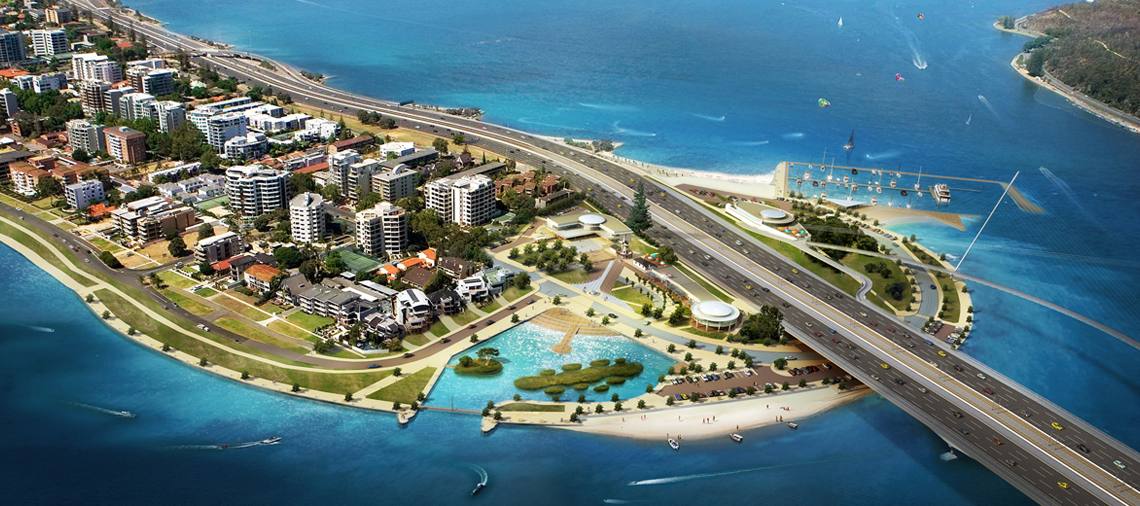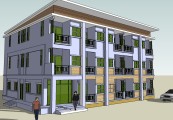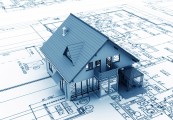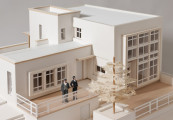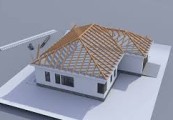Most Famous Architectural Visualization Styles
Architectural visualization is evolving rapidly into an artistic process of generating visually attractive portrayal of the building structures. The journey started from being merely a process of generating 3D replication of buildings. It has now matured into the process of adding life to building models by using an intelligent combination of colors, texture and lighting effects and adding real life scenarios. The visualization process has become a blend of modeling, depicting and dramatization of architectural elements of buildings and their surroundings to produce striking images of buildings.
The techniques used in the 3D visualization process are similar to the tactics used to generate visually appealing scene background and stage atmosphere in the film and fashion industry. In a way, the results are also similar by being sensational and dramatic. There are various styles of presenting architectural visualization like photorealistic with an exact replica of buildings, semi-realistic with mix of real and virtual elements and painting style with abundant use of virtual elements.
The application of the right style of rendering suitable for the nature of building and the purpose of visualization results in a stunning showcase of the architectural beauty of building structures. Here is a broad categorization of visualization styles of building models based on their methods of illustration:
Picturesque Sketching and Watercolor Style
This is a simple visualization duplicating the process of creating paintings and cartoon characters. It uses sketching and pencil drawing style of creating structures and adding color shades like watercolor method used in graphics and game development. The right mix of color patterns, textures, lighting and shadow effects with stylish backgrounds can transform simple pictures to vivid replication of buildings.
Surreal Semi-realistic Style
It is an imaginative blend of real and virtual entities to enhance the look and feel of building structures. This style utilizes the best of both worlds of virtual and real components. It is used to render the building with its surroundings and produce a pronounced look of the building within the surrounding.
Surreal Semi-realistic style can be used to produce special visual effects to reflect different moods of pictures. This style produces a dream-like outlook. It is suitable for panoramic views and dramatization of backgrounds by the proper use of color shades and contrasts.
Authentic Photo-realistic Style
Here, the aim is to produce authentic look and realistic visual experiences. The use of vibrant colors and natural looking lighting and shadow effects are the winning factors in this style. Not all components of the image need to be created from scratch. Astonishing images of interiors can be created by combining readymade templates and standard components in easy and cost-effective ways. The post production fine tuning activities of this style of rendering need to be carefully performed to verify that the natural look is preserved in the final output.
Following is a glance of the most popular architectural visualization styles:
Flashlight Style
This style includes glowing effect of the building with shadowed surroundings. It is ideal for creating night scenes to highlight a building or residential community with dimmed city background.
Halloween Style
It is used with stormy background with minimal shades like grey, blue and light green shades forming Halloween effect. It can be used to produce cinematic effects with different moods like horror, peculiarity etc which will be suitable to depict innovative, stylish and out-of-the-box buildings with a storytelling experience.
Utopian Style
This is grouping of perfectly aligned real life elements giving utopian feel. The slightest imperfections or irregularities that we see in real nature will be portrayed in a flawless manner in this style. They may not look realistic, but portray the idealistic style of rendering.
Real World Style
This is real world style including the imperfections or unmatched elements in the scene as seen in the physical world. This style uses strange combination of realistic and unrealistic components to give a genuine feel.
Dream-Like Vision Style
This is the most vibrant of all styles with attractive architectural aesthetics. The use of colors and decorative components and their positioning in the picture play an important role in this style. The objects in the picture will have magical appearance providing other worldly experience.
Collage Style
This is characteristic portrayal of a collection of supernatural objects. With appropriate inclusion of popular personality icons and imaginary characters like aliens and UFOs, this style will make a powerful impact making the visualizations more memorable.
Luminous Style
It is a style where brighter backgrounds, spacious and extra luminous scenes are used to depict vast interiors of buildings. It is best suited for visualizations where good lighting effects will greatly enhance the look and feel.
Nature Oriented Style
This is used where the surroundings will augment the look and feel of buildings. Snow-filled avenues, large building with flowery gardens and meadows, woods and green parks with wildlife are typical examples for which this style is commonly used. By making use of a suitable style of rendering, architectural visualizations can create wonderful visual experiences and persuasive portrayal of architectural excellence.


